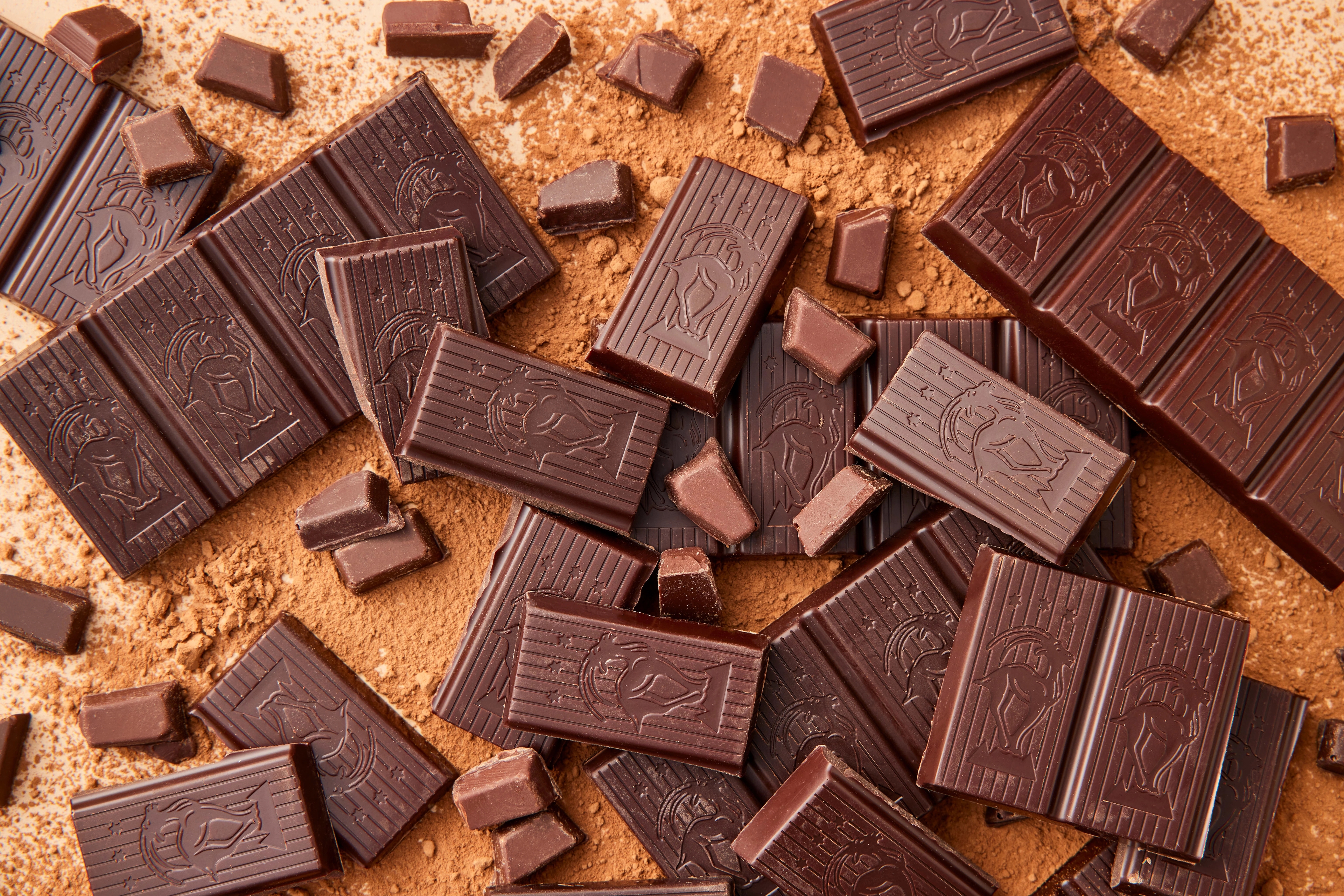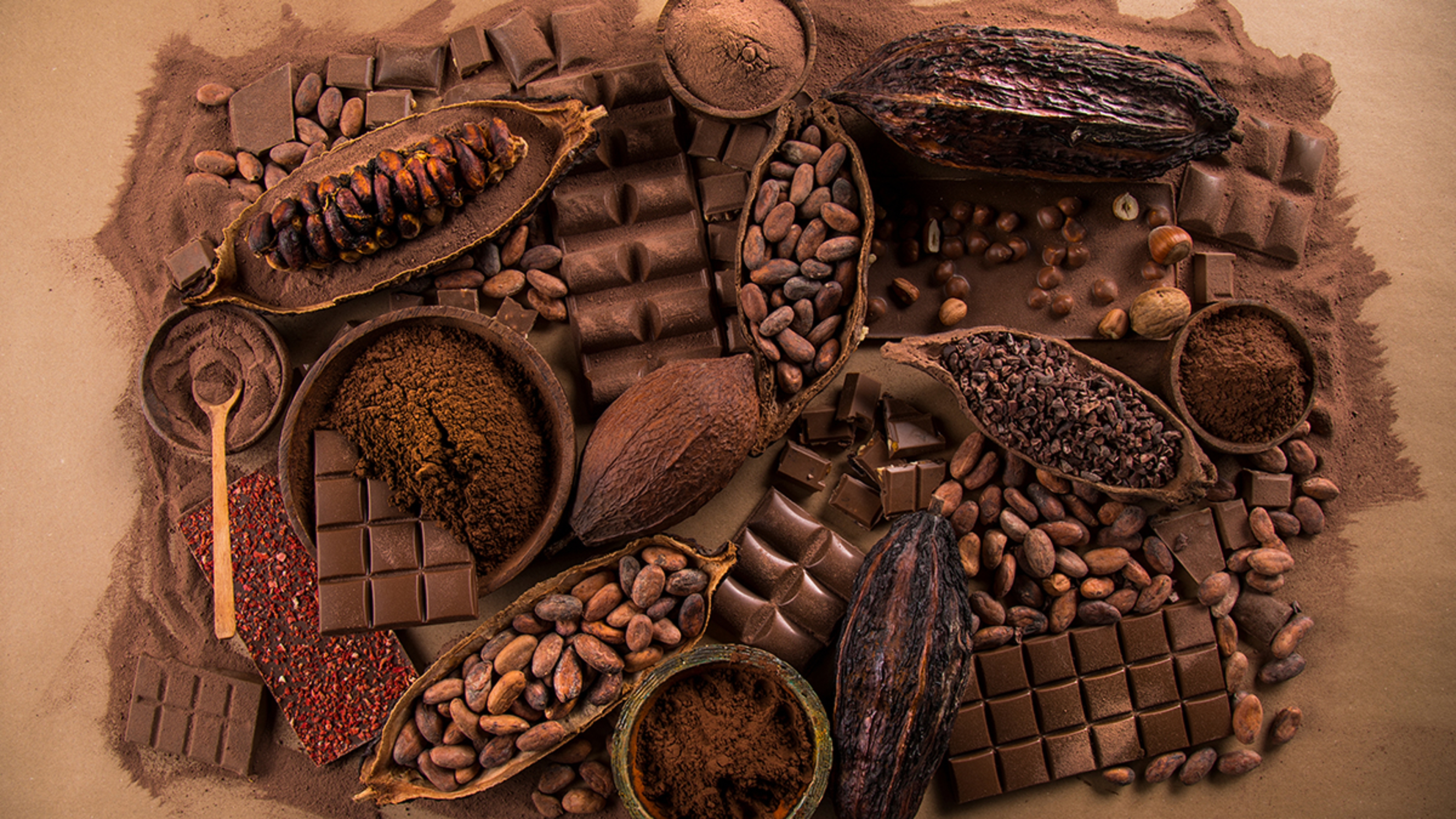Why Is Belgian Chocolate So Dang Good?
There are so many unique and delicious reasons why, from its serendipitous history to its one-of-a-kind recipe.
Sep 06, 2024
Belgium is known for many things: It's where the Smurfs are from, where NATO has its headquarters, and is home to the diamond capital of the world (Antwerp, the country's second-largest city). But the one thing Belgium might be best known for is its chocolate.
The country may be small — it's about the same size as Maryland — but Belgium is a giant chocolate oasis. The amount of chocolate produced there each year is massive — nearly 300,000 tons. That's enough chocolate to make more than 7 billion standard-sized (1.5 ounces) bars of pure Belgian chocolate. Talk about a sugar high!
Belgium's chocolate is the most delectable and craveable on the planet. But how? The cocoa beans used to make its chocolate don't grow anywhere near Belgium.
How Belgium became a chocolate mecca
Credit this most happy of accidents to two fascinating historical coincidences. In the 17th century, Belgium was a major player and colonial powerhouse in the African Congo, one of the primary regions where cocoa beans are grown, even to this day.
Equally important, Antwerp is home to one of the largest shipping ports in the world, making it the ideal destination for countless ships filled with imported cocoa beans heading from the Ivory Coast, Ghana, and Cameroon back to Europe. With the beans readily available, and possessing incredible value, it only made sense for a thriving local artisan chocolate industry to Flemish, sorry, we mean flourish, in the country. And flourish it did!
Belgian chocolate's founding fathers
The history of chocolate in Belgium is centuries old.
“The first trace of chocolate in the country dates back to approximately 1635, when records show that a group of monks living in the Abbey of Baudeloo in Ghent bought some cocoa beans," says Guy Gallet, secretary general of Choprabisco, the Royal Belgian Association of the Biscuit, Chocolate, Pralines and Confectionery Industries. (They really need to work on shortening the name.) These monks are credited with mixing the ground cocoa with sugar and creating a hot cocoa-like drink similar to the “xocolatl" or “chocolatl" first enjoyed by the ancient Aztec and Mayan civilizations, he says.
The drink these Cistercian monks created grew in popularity among the wealthy and began to spread throughout Europe. However, it wasn't for everyone. The drink was costly and getting it was hard, Gallet adds. “Production took place primarily in pharmacies."
A miracle of modernization
With the 1879 creation of a machine called a conch (invented by famous Swiss chocolatier Rodolphe Lindt and capable of heating, grinding, and pulverizing chocolate particles until broken into smooth, tiny pieces), chocolate makers were soon able to produce richer, more velvety chocolate ideal for use in bars and candies.
“As industrialization got underway in the 19th century, the price of chocolate began to fall, making it more accessible for everyday consumers," Gallet explains. “And then, in 1912, Jean Neuhaus — Belgium's most famous chocolatier — invented the praline, a filled chocolate truffle that exploded in popularity within Belgium and beyond. That's when the success and reputation of Belgian chocolate as we know it today really began."
Fun fact: Neuhaus was inspired to created chocolate-filled treats by his pharmacist father, who used to coat the medicines he sold in chocolate before selling them to his customers! That's a brilliant way to get kids to take their medicine.
Neuhaus isn't the only chocolate maker to get its start in Belgium — other famous purveyors, including Godiva, Leonidas, Guylian, and Galler, did too. Today, there are more than 2,000 different independent chocolate shops in operation across the country.
In the U.S., specifically in Medford, Oregon, Harry & David sources only Belgium chocolate from one of the country's premium suppliers for its chocolate gifts. “This chocolate must meet exacting criteria in order to be declared true 'Belgian chocolate,' and it's among the highest quality in the world," says Natalie Botsford, confections merchandise manager at Harry & David.
The 5 rules of Belgian chocolate
To be classified as 100% premium Belgian chocolate, chocolate must not only be made in the country but meet the following strict and meticulous government-enforced legal requirements.
- Made with premium ingredients — typically just cocoa beans, cocoa butter, sugar, and sometimes milk.
- Contain at least 35% pure cocoa powder (some brands push that amount to 80%).
- Contain at least 31% cocoa butter and absolutely no vegetable oil as a replacement. This ensures a smooth, creamy mouthfeel for the chocolate.
- All cocoa beans must be roasted and ground to an incredibly fine texture, and the chocolate must then be conched and tempered (heated and then cooled to a specific temperature) during production to ensure it has gone through the highest quality production standards.
- Typically, all Belgian chocolate must also be stored in air-tight packaging and kept in a cool, dry place to preserve maximum freshness.
What's the difference between Belgian chocolate and Swiss chocolate?
What an excellent questions. Although both chocolates are known for their use of high-quality ingredients and exacting traditional methods of production, they do have some distinct differences.
- Taste: Swiss chocolate tends to be milder, sweeter, and more creamy, whereas Belgian chocolate has a more pronounced cocoa-forward flavor.
- Texture: The cocoa powder used in Swiss chocolate tends to be milled longer than that in Belgian chocolate. This gives Belgian chocolate a slightly firmer, more substantial mouthfeel than Swiss chocolate, which tends to be smoother.
- Ingredients: Belgian chocolate has a higher proportion of cocoa liquor to cocoa butter than Swiss chocolate, giving it a richer, more intense chocolate flavor. The Swiss also tend to use condensed milk in their chocolate, whereas Belgians use whole milk. Both add creaminess, but the condensed milk also makes Swiss chocolate sweeter overall.
Our three favorite Belgian chocolate gifts
Whether you're shopping for yourself, a friend, or a loved one, these Belgian chocolate-packed offerings are sure to satisfy even the sweetest of teeth.
Quick, before you go
Here are three more mouth-watering Belgian chocolate facts to know.
- Visitors to Brussels Airport buy more chocolate than is sold at any other airport in the world — more than two tons per day!
- Chocolate is so important to Belgium that the country is home to its own chocolate museum (Choco-Story Brussels), the largest chocolate factory in the world, and a popular chocolate academy that serves to educate and train future chocolatiers.
- Greek-born immigrant Leonidas Kestekides may have been the first to realize that life truly is like a box of chocolates. He's credited with introducing the first-ever chocolate variety pack box, which he sold from the Brussels chocolate shop he opened in 1913. You're welcome, Forrest!
.svg?q=70&width=384&auto=webp)











